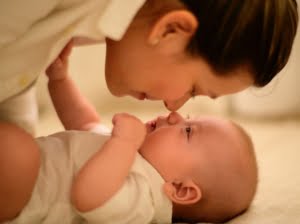When you think about attachment issues where does your mind go? Do you think about babies who didn’t form a secure attachment to their parents? Or do you think about children living in orphanages that develop attachment disorders?
 What about adoptees who struggle to bond after adoption? Maybe you think about a neglected child who had broken or dysfunctional relationships. All are examples of insecure attachment. San Diego Christian Counseling can help with these attachment issues
What about adoptees who struggle to bond after adoption? Maybe you think about a neglected child who had broken or dysfunctional relationships. All are examples of insecure attachment. San Diego Christian Counseling can help with these attachment issues
Attachment issues are an area professionals are wrestling with as social media appears to be affecting attachment and influencing how we bond as a human race. Our ability to connect, have reliable and consistent experiences and share our feelings has changed in the recent past.
We are not only seeing adults struggle with unhealthy attachment. We’re seeing more children who feel disconnected from their parents as a result of social media and couples are struggling more than ever.
What Secure Attachment Looks Like
Forming healthy attachment can be the proverbial wolf in sheep’s clothing. What feels like a healthy and secure relationship may be a facade. We’ve all had the experience of finding out a couple was getting divorced and been caught off guard.
From our perception, the couple appears to have an ideal and loving marriage. We end up questioning what their bond was like and how we could have missed the signs. It’s easy to put on a happy face and display a strong, healthy relationship when that’s not the case.
 Secure attachment is not going to happen overnight. Be it in a new marriage, the birth of a baby, an adoption, or building a friendship. It’s will need to be tended like the most precious of gardens.
Secure attachment is not going to happen overnight. Be it in a new marriage, the birth of a baby, an adoption, or building a friendship. It’s will need to be tended like the most precious of gardens.
Strong awareness of unhealthy signs, patterns, and behaviors need to be cultivated so these can be weeded out. Tender loving care needs to go into interactions and intentional pruning so growth can occur.
With enough tending, nurture, and time, the beauty of security can flourish. Don’t be discouraged if it doesn’t bloom as fast as you’d hoped. Especially if you’ve faced previous trauma, abuse, damaged or dysfunctional relationships, or neglect. It’s going to take time. Enlisting the help of a counselor can help to help determine what needs to be pruned, pulled, or cultivated.
Secure attachment displays itself in different ways. The following are a few of the most common signs to look out for. Keep in mind that not everyone will have all of these as part of their relationship. If special needs, learning disabilities, or mental health struggles are present there may be some of these components to which individuals are not capable of forming.
- Desire to be in proximity to one another
- Confidence that the person will be there for you when you need them
- Positive engagement in social situations and show concern and care for others, even those who they do not feel attached to in any way other than proximity
- Ability to remain present and engaged even in conflict
- Comfort in sharing feelings with one another without fear of judgment
- Seeking the other person out for a source of comfort or safety
- Ability to clearly identify, express, and find ways to have needs met
- Favorable response of children when their parent or primary caregiver returns
- Consistency in reaction, care, and support providing a “safety net” of sorts for how the other person will respond in different situations
- The tendency to express reflections and thoughts about others in a positive way
- A feeling of security to explore new situations or places, learn new things, and have new experiences with their support and blessing
- Ability to regulate and identify emotions (so long as a mental health struggle or learning disability does not interfere with this part of the brain)
- Positive self-esteem
- Children who seek comfort from their parent or primary caregiver rather than a stranger
- Preference for one another’s company over that of strangers
- Children with high levels of empathy
- No fear of being alone
 The most common example of secure attachment is that of a mother and her baby. If the mother has consistent responses to the needs of her baby, then the baby is going to trust her. The baby is going to know she will be there to meet her needs and will provide comfort.
The most common example of secure attachment is that of a mother and her baby. If the mother has consistent responses to the needs of her baby, then the baby is going to trust her. The baby is going to know she will be there to meet her needs and will provide comfort.
As the baby grows it will seek out its mother as a primary source of comfort and may even display separation anxiety when its mother cannot be found. When going out into the world mother provides consistency and protection in new scenarios which helps the baby settle in with ease.
As the child grows they will continue to look to mother and gauge their reactions based on hers. We’ve all seen a child fall and then look at mom to see how she reacts. This is a child who has likely developed a secure bond with its mom.
If mom gets upset then the child knows they should be. If mom isn’t worried, the child doesn’t need to worry either. Our relationship with our mothers, or our primary caregiver, is our very first secure attachment for most people.
For those who did not have a healthy relationship with their mother or other primary caregiver, all is not lost. Children and adults have been able to learn how to form secure attachment even if they did not experience one in infancy or childhood. As long as individuals are willing to put in the work, it is possible.
There’s no reason secure attachment cannot be part of relationships later in life even with trauma, damaged relationships, and dysfunction. It’s going to take more work and the beautiful benefits will be worth it.
The Difference Between Attachment and Love
Attachment is not the same thing as love. A secure attachment comes out of a trusting relationship. It involves a reciprocal exchange between people of comfort, pleasure, and care. We can fall in love fast while attachment takes time. Couples often report they didn’t have a fully developed secure attachment until after they were married.
 We can love our babies from the moment we find out we’re pregnant or the first time we look into their eyes. That does not mean we’ll have an instant secure bond that develops over time as you come to know one another.
We can love our babies from the moment we find out we’re pregnant or the first time we look into their eyes. That does not mean we’ll have an instant secure bond that develops over time as you come to know one another.
In some loving relationships, unhealthy factors may look healthy to others (or even themselves). Emotional dependence, manipulation, obsession or preoccupation with one another, co-dependence, and martyr syndrome can look like a healthy and loving relationship.
The couple may love one another and think they’re doing what’s best for the other. They may truly think they have a healthy relationship when in fact this isn’t true.
Love is based more on feelings. It’s not merely butterflies in your stomach, the care you feel, and not being able to get them out of your mind. Love is primarily a commitment. Parts of love and attachment can overlap, however. You need to have love to have a secure attachment. But being in love or feeling love for someone does not guarantee a secure attachment.
If you’re concerned about your attachment or unsure about love vs attachment, we can help you learn the differences. We’re also here to help you work on tools to form secure attachments with those you love, with the support of Counselors at San Diego Christian Counseling.


